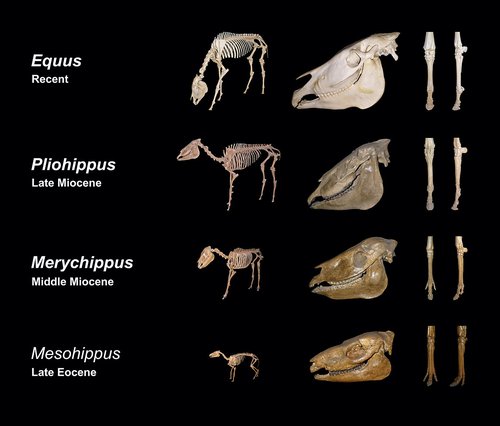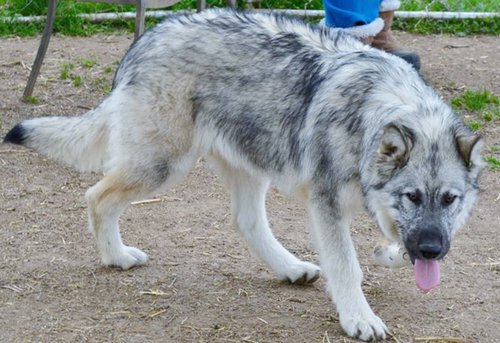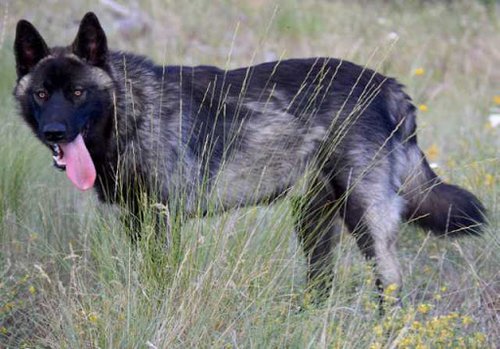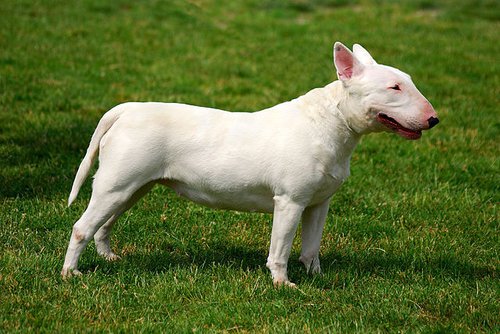Selective Breeding
Plants and animals have changed dramatically over the lifetime of our planet. Through evolution most organisms have gained or lost certain characteristics based on their need for change in order for their species to survive. When evolution was first theorized in the 19th century, our view of the world and our place in it radically changed.
Evolution of the Horse

Image Credit: H. Zell
Charles Darwin was the first popular scientist to suggest that plants and animals evolved over time, changing their characteristics to suit the ever changing environment around them. Darwin also challenged the scientific world by further writing of his ideas of natural selection. As he described it, natural selection is the event that causes evolution and happens naturally when organisms that are best adapted to their environment survive to give their genetic characteristics to the next generation. Darwin believed that evolution through natural selection is accomplished over time and not seen to happen rapidly. But, through human intervention, this process has been sped up greatly. Darwin called the human practice of breeding and selecting for specific characteristics artificial selection.
One type of artificial selection is called selective breeding. This is seen when people intervene in the natural reproduction cycle by choosing both the male and female and claiming responsibility for the selection of the offspring based on certain desired criteria. Scientists agree that selective breeding of wild plants and animals began around 10,000 years ago. Not surprisingly, the domesticated dog is said to have evolved from its Gray Wolf ancestors around that same time (12,000 years ago).
Silver Fox

Image Credit: Zefram
In 1959, a Russian geneticist, Dmitry K. Belyaev, curiously wanted to find out how dog domestication occurred. He hypothesized that the wide range in looks achieved in the domesticated dog could have been the direct result of selectively breeding for one specific character trait, tamability. As a result of his hypothesis, he created a program to domesticate a taxonomically similar species to the dog that had never before been domesticated, the silver fox. He began by acquiring silver foxes bred on pelt farms as they were gentler and easier to obtain than the wild silver foxes living in the Siberian landscape. As his theory suggested, choosing offspring based on a single genetic trait, tamability, would automatically change the appearance of the silver fox morphologically, physically, and behaviorally. After 52 years of breeding for this single character trait, the domesticated silver fox has indeed begun to change in its appearance. White patches, colored spotting, shortened legs and tails, floppy ears, rolled tails, and brown mottling are now seen on many domesticated silver foxes which do not occur on fox farms or in the wild. The tamability timeframe has also widened considerably and domesticated silver foxes respond to sound and socialization techniques much earlier than the foxes bred on pelt farms.
Musk Ox

Photo credit: Quartl
The Musk Ox is a prehistoric mammal that lived during the Ice Age that has been selectively bred for 62 years for domesticated livestock temperaments. The entire Musk Ox population was in danger of becoming completely extinct due to excessive hunting. In fact, they became extinct in Alaska in the late 1800s and were reintroduced by the US Fish and Wildlife from small herds in Greenland in 1935. Over the years, wild Musk Oxen have made a dramatic comeback, are no longer considered threatened or endangered and can still be seen in the wild northern regions of the world, including Greenland, Alaska, Canada and Siberia.
In the 1950s, John Teal, an anthropologist, set out to prove that Musk Ox could be domesticated and raised sustainably. After a year of research, he started what is now the Musk Ox Farm Project in Palmer, Alaska. With the support from the W.K. Kellogg Foundation and the University of Alaska, the project has been able to grow tremendously, producing what are now considered to be domesticated Musk Oxen. As a result, the project has successfully created a unique Native Alaskan industry that specifically helps low-income native people. The project continues today and is still governed by the Musk Ox Farm, a non-profit organization for the preservation of Native Alaskan industry.
American Dirus Dog

Minerva, a DireWolf Dog
Much like the Fox Farm Experiments and Musk Ox domestication, The Dire Wolf Project also uses selective breeding techniques to breed for temperament. In the past, medium and large dogs were bred for their ability to perform beneficial tasks, such as herding, protection, and hunting. Now, however, there is much less of a need for working behaviors in dogs and more of a need for companionship qualities without working type behaviors. For the first twenty four years of the Dire Wolf Project, the American Dirus was bred solely for quiet, mellow temperaments. The Dire Wolf appearance was not bred for at all during this time. As with the Fox Farm Experiments, selectively breeding in this way has ultimately changed the appearance of the American Dirus dog over time. American Dirus dogs with larger bone structure, larger skull size, and heavier bodies possess the mellowest temperaments.

Stanley, an American Dirus Dog
Although the American Dirus dog breed was not started by breeding one set type and seeing change within that one type as in the case of the Fox Farm Experiments, we have bred only canis lupus familiaris (the domesticated dog). The American Dirus dog has mingled Alaskan Malamute, German Shepherd Dog, English Mastiff, Anatolian, Great Pyrenees, Golden Retriever, Labrador Retriever, Akita, and now Irish Wolfhound in a melange of genetic traits. Each crossbreeding brought with it challenges and set backs which then needed to be bred out as well as enhanced traits that needed to be kept. Selective breeding was and still is the key to continuing on the path to simulating the domesticated Dire Wolf's bone and body structure.
Above all, however, the DireWolf Dog International's aim is to develop a healthy large domesticated companion dog. We first selectively breed for health, then temperament. It has only been recently that we have begun to selectively breed specifically for the Dire Wolf bone and body structure. This is because we are acutely aware that we must always remember to be mindful that selective breeding for extreme looks can and does cause dramatic change over time, sometimes for the worse. It has been noted that 1 in 4 recognized purebred dogs has a genetic disease.
When we choose to place the health and temperament of an animal behind selecting those dogs that fit an excessive desired physical trait, selective breeding may just become our enemy. This has been experienced with many of the dog breeds we know today. Take the Bull Terrier, for instance. It once had jaws structured for holding onto semi-wild bulls and pigs. At the beginning of the 20th century, the shape of the Bull Terrier's head began to change. Now, although it remains a beautiful breed, it's head is no longer at the proper angle to perform the job for which it was bred. Inevitably, the Bull Terrier's temperament changed as a result of it's feature change in order to reflect its new abilities. Recently, a Texas hunting group has introduced a newly created breed of dog to the United States to perform the same duties the Bull Terrier was once able to do, the Dogo Argentino.

Bull Terrier around 1915.

Bull Terrier today
Image Credit: Lilly M

Dogo Argentino
Image Credit: Nose
The American Cocker Spaniel is another example of selectively breeding for an extreme. Once bred for hunting small prey, this breed is no longer able to be used as a working dog. Although beautiful, unfortunately, this once friendly, outgoing dog is now showing some severe behavioral issues as well as increased health issues in the eyes, ears, skin and heart.

Ch. American Cocker Spaniel around 1887.

Ch. American Cocker Spaniel today;
Image Credit: Desaix83,
The remarkable looks of some dog breeds were able to be achieved through the use of selective breeding. But, breeding animals is a science and an art. In order to continue to achieve the most rigorous standards in health and temperament as well as accomplish the bone and body structure of the Dire Wolf, a healthy dose of both patience and persistence is needed. Health and temperament must continue to be strictly monitored as we grow ever closer to the look we hope to achieve. DireWolf Dog Int'l has established strict breeding rules and regulations for each breeder wishing to continue developing this unique breed of domesticated history.
REFERENCES
Dogs That Change the World. Nature. Retrieved: 2011-06-14.
Artificial Selection Powerpoint. University of Wisconsin-Madison. Retrieved: 2011-06-15.
Evolution of Dogs: Wolf to Woof. National Geographic. Retrieved: 2011-06-15.
Rosettes to Ruin. Patrick Burns. Retrieved: 2011-06-15.
Early Canid Domestication: The Fox Farm Experiment. Lyudmila N. Trut. Retrieved. 2011-06-15.
The Cocker Spaniel Handbook. Caroline D. Coile. Retrieved: 2011-06-18.